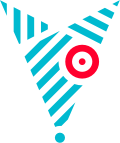At the start of this year I was invited to demo Standing and to speak at E‑Motive Day, a joining of innovative civil society organisations interested in (as they put it) North-South exchanges.
In my lecture I talked about how Standing works and why it is interesting for civil society organisations (or NGOs). I also talked about why I think NGOs should stop thinking in terms of campaigns and start thinking in terms of products.
Below is an adaptation of what I said that day and some of the slides I used. I will skip the first part in which I gave the usual introduction of Hubbub and also plugged Bycatch, which was still in pre-release back then, and will dive right into my introduction of Standing.
Standing
Standing is an app for playful activism. You can download the app on the Apple app store, and check the website on getstanding.com.



Here is how it works. You start by entering a cause you would like to stand for. Then you press and hold a button. A counter starts running. You need to keep holding the button, and not move, or the app will end the session. Once you are done standing, you can share your standing session with the world.

Why did we make Standing? We started in the summer of 2013. (Sounds like a long time ago!) We had been interested for some time in the use of social media for activism. People appropriating technology for their own ends. Then the Arab Spring happened. And the standing wo/man protests happened in Istanbul. It started as a joke: can we make an app for standing still? But then we decided to take the joke seriously, and actually make it.

What is interesting about Standing? It is a contribution to the discussion around clicktivism. It sits somewhere between signing an online petition, and walking in a demonstration. It requires more effort than the former, but less than the latter. It is also a digital/physical hybrid. So it plays with the categories of activism we are inclined to think inside of.

It is also playful because it is not instrumental. The act of standing, if you try it, you will find it is pleasurable in and of itself. I am not saying it is necessarily fun but it certainly is an interesting experience, without necessarily requiring instrumental outcomes. This is why when we launched the app at Mediamatic we decided to do a stand-in lasting half an hour and invited a Salvador Breed to play a set of music to stand to.
We are also ‘playing with’ the fact that apps are used by companies and governments as tools for persuasion and control. We are appropriating the concept of the app, and also poking fun at the fallacy that all world problems can be solved with apps.
And Standing is open-ended. It invites people to playfully express themselves. We see this in the variety of causes people stand for. They range from the personal to the global and the serious…
… to the frivolous.
So Standing is an app for playful activism. It offers a playful alternative to old and new categories of civic action. It playfully offers a pleasurable experience. It playfully gives rise to performances. It playfully pokes fun at ‘there is an app for that’. And it lets people playfully express themselves. We started it ourselves because we wanted to have an example of this kind of product, and as an experiment.
Digital Transformation, Playful Design, and Activism
Why should you care? Because we at Hubbub think that NGOs will need to start shifting from thinking in terms of campaigns, to thinking in products. Let me explain.
‘Digital’ is transforming all aspects of society, and also organisations. Organisations will either become digital, or be replaced with ones that are.
Power within digital organisations will naturally shift from marketing and communications to services and products.
Why is this? Because digital enables direct interaction with your audience or users or the public. It is digital products and services that this interaction is mediated by. Also, the digital products people use everyday condition their expectation of interacting with your organisation.
So in the case of NGOs we think it makes a lot of sense to invent products that enable people to work with you towards common goals.
And we think at least some of these products should be playful, like Standing.
Because to play is to be human, engaged with the world. It is the way in which people explore the free movement within more rigid systems. As with pranks in the office, it is a way to appropriate a context and in the process bring freedom to it. To make it personal.

Playful activism has always done this. To playfully subvert the rules of society.

And in some cases, it has been a powerful force for change.
But even in the cases in which it has not brought sweeping change, each and every act of play has always had meaning on a personal level. And for me, that is already a lot.




























Week 323
This was an important week for Free Birds. We reviewed the latest sprint with the client and subsequently released the release candidate (I know!). Only one more sprint to go before we can “go gold”. We also planned this next and final sprint and received a green light soon after.
Meanwhile we made a careful start with the concept for project HENDO, mostly by reviewing my notes from the first three co-creation sessions.
I blogged a lecture about playful design for activism from the start of this year.
Alper has started open-sourcing some of our older projects over on GitHub.
I ended the week by attending a Hacking Habitat lecture by Evgeny Morozov on Thursday evening and participating in the workshop connected to it on Friday, delving into the nature of contemporary bureaucracy and how individuals might curb it to their advantage.